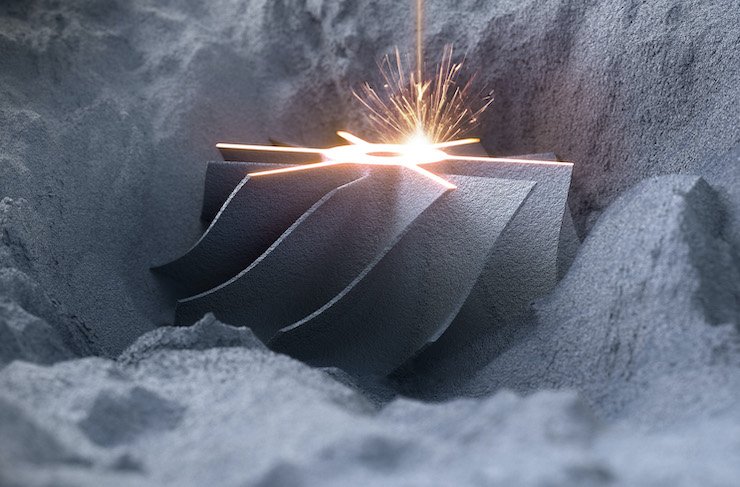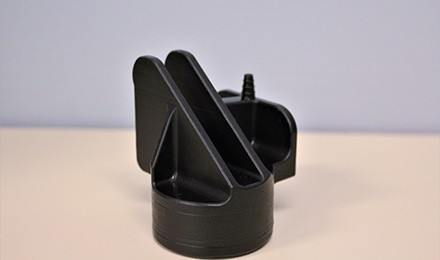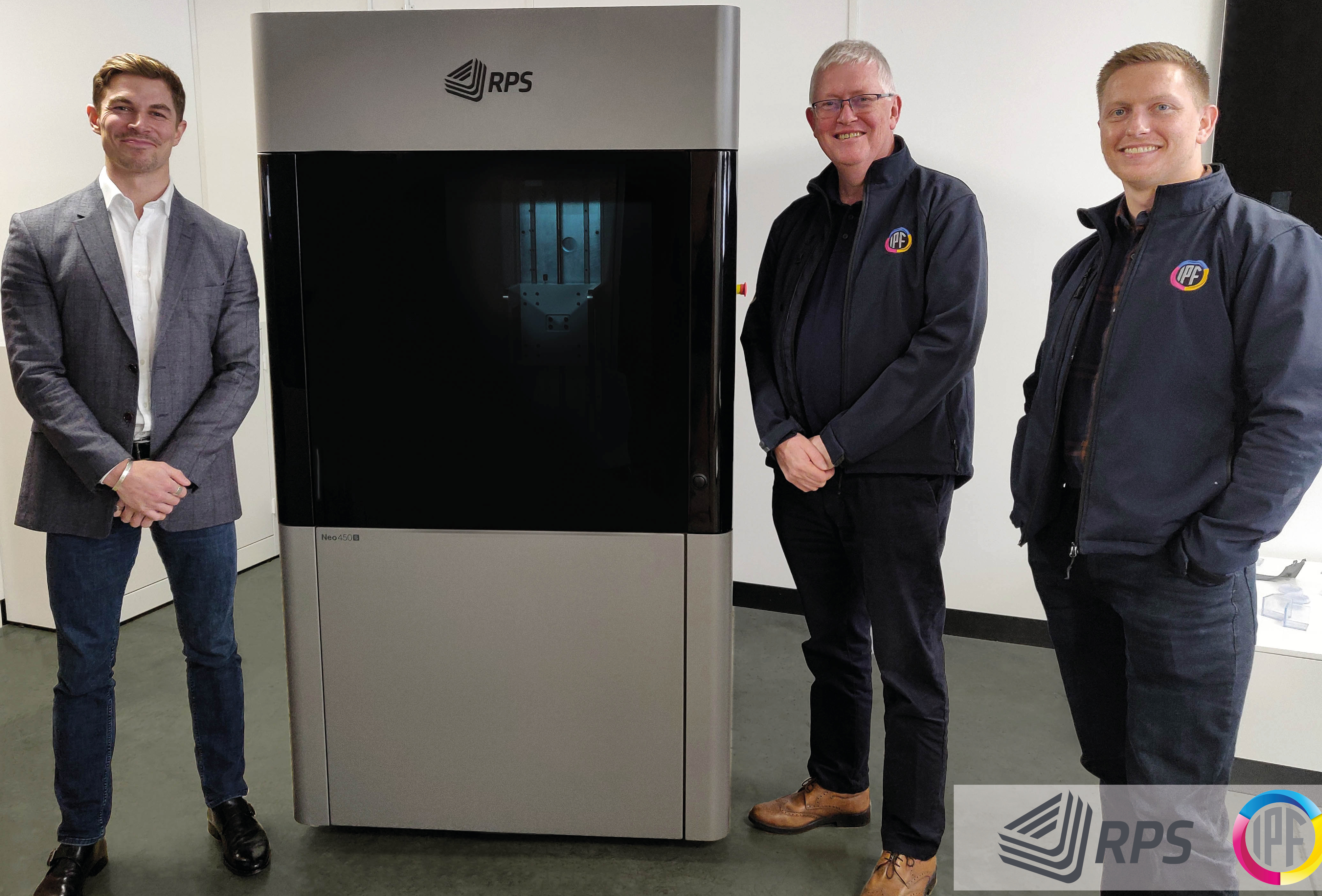In this edition of Sliced, the 3D Printing Industry news digest, we cover the latest business developments, partnerships, and acquisitions in the additive manufacturing sector.
Today’s edition features 3D printing certifications, up-to-the-minute business news, an automotive update, new additive materials, new additive manufacturing training, and even a biodegradable corset.
Read on for the most recent updates from Amaero, Titomic, JRM, Rosswag Engineering, RPS, XJet, the MTC, and more.
Automotive developments from JRM and 3DnA
Starting with the latest automotive news, the Tier 1 motorsport supplier JRM Group has become the first firm in the UK to install the second generation of DMG MORI’s LASERTEC 30 SLM 3D printer. The company intends to make the system a “cornerstone” within its existing manufacturing partnerships while targeting new clients in the medical and aerospace sectors.
JRM already operates DMG Mori’s DMU 75, monoBLOCK, DMU 50, CLX 450, and AL2 machines, but now it’s seeking to expand on its portfolio. The move comes amid JRM’s plans to open a new center of excellence to complement its three existing sites, where it designs low-volume but high value printed parts for the likes of Aston Martin and Jaguar.
“DMG Mori technology puts us right at the front in engineering and technical capability,” said Jason King, Managing Director at JRM Group. “Our specialists have the skills to develop radical solutions and now, with the LASERTEC 30 SLM second generation, we have the tools to turn them into reality.”
3D printer manufacturer Stratasys has announced that it has sold a large-scale F900 3D printer to Italian engineering service bureau 3DnA. Having previously used a Stratasys Fortus 450mc machine to prototype and create spare parts, 3DnA will now be able to expand its production capabilities to target a range of new transportation markets.
The firm claims to have seen a strong uptake of its services since the start of the pandemic, and after installing the F900 machine, it has secured a new rail contract to produce customized tools for carriage maintenance.
“The F900 enables us to cost-effectively create customized parts up to a meter long, while accessing an increased range of high-performance materials,” said Alessandro Manzo, General Director of 3DnA. “By combining our in-house Design for Additive Manufacturing (DfAM) and best-in-class printers such as the F900, our engineers are now able to offer innovative production solutions to customers.”

Rosswag and Biolgelx gain accreditations
Metal processing company Rosswag Engineering has revealed that it has gained “Additive Manufacturer” certification from technical service corporation TÜV Süd. The accreditation makes Rosswag a certified producer of specific metal powders for 3D printers, and means that its existing clients will now benefit from a service that covers the entire process chain.
What’s more, following the successful audit, Rosswag claims to be the only company in the world that combines the two certifications of “Manufacturer of Metal Powder” and “Additive Manufacturer”.
“Our atomizer and the associated periphery is designed for the efficient production of small quantities of special metal powders up to 50 kg,” said Gregor Graf, Head of Engineering at Rosswag Engineering. “This is the key for our in-house qualification of more than 35 different materials in the portfolio of Rosswag Engineering.”
Scottish biomaterial developer Biogelx, meanwhile, has achieved ISO9001 certification from the International Organisation for Standardisation (ISO). The accreditation verifies that Biogelx’s Quality Management Systems (QMS) have enforced a high level of customer focus, and implemented the required level of evidence-based decision making.
Since being spun-off from the University of Strathclyde in 2013, Biogelx has focused on maintaining high standards with its range of peptide hydrogels and bio-inks. Having now passed a thorough audit, which was conducted by Lloyd’s Register Group, the company has stated that the certification reflects the progress it has made over the last seven years.
“We are all so pleased with the progress we have made in order to achieve this certification, which shows our dedication towards continual improvement and providing the best service to customers,” said Alison Clayton, CEO of Biogelx. “The ISO 9001 certification is such a great affirmation of the quality standards we strive for here at Biogelx.”
Creators share 3D printing fashion and furniture applications
Freelance industrial designer Adam Miklosi has released an open-source IKEA-inspired range of 3D printed products called the “Ikeahack collection.” Based on his personal experiences of using six IKEA lifestyle products over two years, Adam decided to upgrade them in order to improve their usability and efficiency.
At present, the collection includes everyday items such as a hanger, lamp, bed tray, toothbrush holder, soap dish, and a cheese grater. Each of the upgrades provides a new feature, such as a shade for the lamp, anti-creasing ‘shoulder pads’ for the hanger, and even a cheese-catching ring for IKEA’s ever-popular CHOSIGT cheese grater.
On a very different note, French-Lebanese architect Maria-Thala Al Aswad, has designed and 3D printed a reptile-inspired ‘Post-Iconic’ corset. Influenced by the conical corsets of Jean-Paul Gaultier in the early 90’s, Maria-Thala’s additive nightwear aims to recapture the idea of releasing the female body by bringing it back to its biological aesthetic.
The textures of the corset were transferred onto a human body and sculpted through a highly-complex 3D modeling process and printed using biodegradable white PLA filament. Given that the polymer used to produce the design was derived from renewable cornstarch resources, the fancy femme-wear fits into the slow, biodegradable, and zero-waste fashion categories.

University pair-ups for EOS and Sigma Labs
3D printer manufacturer EOS has partnered with Texas A&M University to provide an industrial 3D printing professional development program. The hands-on training course will be led by industry experts from EOS’ applied engineering group Additive Minds, and is designed to train student engineers to meet evolving industry needs.
Texas A&M’s program is set to provide participants with a broad understanding of most AM production methods, while taking a “deep dive” into the latest powder bed processes such as AMLS and SLS 3D printing. The wide-reaching training also covers metal and polymer materials, case studies, best practices and troubleshooting amongst other topics, and both EOS and Texas A&M are excited about its potential.
“Our partnership with EOS and the Additive Minds team has allowed us to create an industry-leading additive manufacturing training course,” said Rob Gorham, Executive Director of Manufacturing Initiatives at Texas A&M University. “We’re thrilled to be offering this program to the North American workforce.”
Quality assurance software developer Sigma Labs has agreed to collaborate with Northwestern University to validate its PrintRite3D technology for DED powder blown 3D printing processes. A beta system will be installed onto a customized open-architecture DED system at the university named Additive Rapid Prototyping Instrument (ARPI), where it will undergo a series of tests and evaluations.
DED technology has been applied by a range of aerospace and defense firms, and now Sigma is also seeking a commercial partner, to expand on its beta program and trial the software in a similar end-use environment.
“OEMs have seen an increase in demand for the DED machine ranging from high-level R&D projects to the production of prototype and production parts,” said Mark Ruport, CEO of Sigma Labs. “This initiative expands our market opportunity, and is the first step in Sigma’s strategy to apply our technology across a broad array of additive manufacturing processes.”
DSM releases new Somos black material
Global chemical and engineering plastics company DSM has launched a new 3D printing material called Somos WaterShed Black. Optimized for use with stereolithography (SLA)-based systems, the firm’s latest material can reportedly be processed up to 50 percent faster than other black polymers.
What’s more, due to its “truer black” color right off the machine, the material doesn’t require post-painting or processing, which enables users to save the time and costs associated with these activities. Given that the resin is designed to enable the creation of durable, rigid parts, it also has potential applications within the automotive and electronics sectors, among others where black parts are desirable.
“With Somos WaterShed Black, we are addressing the need for a truly black SLA material, and bringing to market a material that processes up to 50% faster into a part with smooth surface finish,” said Geoff Gardner, AM Innovations Director at DSM. “We are pleased we can bring manufacturers the technological developments they want to see.”

3D printing business news from RPS, XJet, PostProcess, and more
Material jetting specialist XJet has announced that the Manufacturing Technology Centre (MTC), has installed an XJet Carmel system at its UK-based facility in Coventry. MTC is an independent research and technology group that hosts the National Centre for Additive Manufacturing (NCAM), with the aim of advancing the adoption of AM, and a particular focus on ceramic processing.
According to the MTC’s Senior Research Engineer Dr. Tom Wasley, the XJet system has demonstrated the ability to produce end-use ceramic parts, making it an ideal addition to MTC’s existing printing capabilities.
“The surface finish that can be achieved with XJet is arguably very hard to replicate with any other kind of additive process, it provides a means of making small, intricate and extremely detailed parts,” explained Wasley. “There is a high demand for parts like this in the aerospace, medical, dental, and defence industries.”
British plastic part producer IPF has announced the acquisition of a Neo450s SLA system from 3D printer manufacturer RPS. IPF provides CNC machining, polymer fabrication, and 3D printing services, and the firm believes that adding an RPS machine to its portfolio, will only increase the time and cost benefits it gains from similar technologies.
Having identified a gap in the market for providing a cross between prototyping and product design services, IPF now intends to deploy the Neo 450s to build complex parts that require minimal finishing. According to the company, the technology will allow it to fabricate highly-detailed components for its existing clients in the automotive, aerospace, and medical industries.
“We are thrilled that IPF is one of the first within the industry to invest in a Neo450s,” said David Storey, Director of RPS. “With IPF’s impressive experience within the plastics industry, we know that they will utilize the Neo450s technical advantages to provide enhanced 3D printing solutions and applications for their customers.”

Elsewhere, automated post-processing developer PostProcess Technologies has revealed that crimping machine producer Lillbacka has begun using its RADOR automated surface finishing solution. Lillbacka utilizes laser sintering 3D printing technology within its production process, but traditional blasting post-processing procedures have prevented it from creating optimal end-use parts.
As a result, the company turned to RADOR, which uses Suspended Rotational Force (SRF) technology to consistently finish parts, and enables specific customer specifications to be implemented. Although Lillbacka is currently only using the RADOR for metal finishing, the “full-stack solution” is capable of processing parts produced from all 3D printing technologies, without causing them to break.
“As we further implement digitalization within our product portfolio, we have come to realize the power in leveraging intelligent solutions,” said Masi Tammela, AM Manager at Lillbacka. “Bringing the automated RADOR system into our additive workflow, will allow us to broaden our additive capabilities, from prototyping and custom tooling to serial production of customer-specific crimping dies.”
UK-based additive manufacturing supplier 3D Printz has signed a new eco-friendly distribution deal with materials provider Fishy Filaments. The Cornish-based business turns recycled nylon fishing nets into engineering-grade filament, which is often used by hobbyists and professional product designers to 3D print parts.
“All our polymer blends are 100% recycled. We add no pigments or other modifiers. Instead we work with the nets we receive from fishing fleets, and process them separately in order to maximise their potential,” explained Ian Falconer, Director of Fishy Filaments. “If we didn’t take these nets and re-process them, the majority would be sent to landfill.”
“We’re delighted with this partnership,” added Peter Roberts, Director of 3D Printz. “All business sectors should be doing what they can to help the environment, so we are very pleased to be able to add Fishy Filaments to our growing range.”
Industry collaborations featuring Amaero and Titomic
Australia’s national science agency CSIRO has partnered with metal 3D printing service provider Amaero, to develop a conformal cooling solution to a stubborn die casting problem. High Pressure Die Casting (HPDC) is a printing process that forces molten metal into a die cavity via a series of passages (including a ‘sprue area’), to produce a part in the shape of the cavity.
When the sprue area runs too hot, the die takes longer to cool between shots, which causes prolonged cycle times and frequent production line stoppages. To overcome this hurdle, the joint team combined computer modeling and 3D printing to design parts with optimized channels, and produce them with a high level of accuracy and complexity.
“We used the modelling to assess the effectiveness of conformal cooling, compared to traditional tooling used in industry,” explained Dr Gunasegaram. “This capability has potential applications in plastic injection moulding, metal die-casting tools, and other metal tooling used in manufacturing too.”
Metal 3D printer provider, Titomic, has announced a collaboration with the British tooling company Hockley Pattern & Tool. As part of the agreement, Titomic will supply its Kinetic Fusion (TKF) 3D printing technology to Hockley, to help it meet a high level of customer demand for its carbon fiber tooling.
Having undertaken extensive R&D to validate TKF for the job, Titomic now claims it can reduce Hockley’s lead times from 6-12 months to a matter of weeks, by decreasing the amount of material that needs to be machined away. Both firms are treating the project as a foundation for future opportunities, with TKF holding the potential to optimize Hockley’s processes even further.
“Hockley and its customers are keen to explore and embrace the benefits available through the adoption of the TKF,” said Ian Eaves, Head of Technical & Innovation at Hockley. “Reducing our carbon footprint, a quicker time to market and reliable supply, are just some of the key benefits we hope to bring to our clients.”
To stay up to date with the latest 3D printing news, don’t forget to subscribe to the 3D Printing Industry newsletter or follow us on Twitter or liking our page on Facebook.
Are you looking for a job in the additive manufacturing industry? Visit 3D Printing Jobs for a selection of roles in the industry.
Featured image shows the Sliced logo on top of a supercar race, being led by a JRM-supported Nissan GT-R. Photo via the JRM Group.



